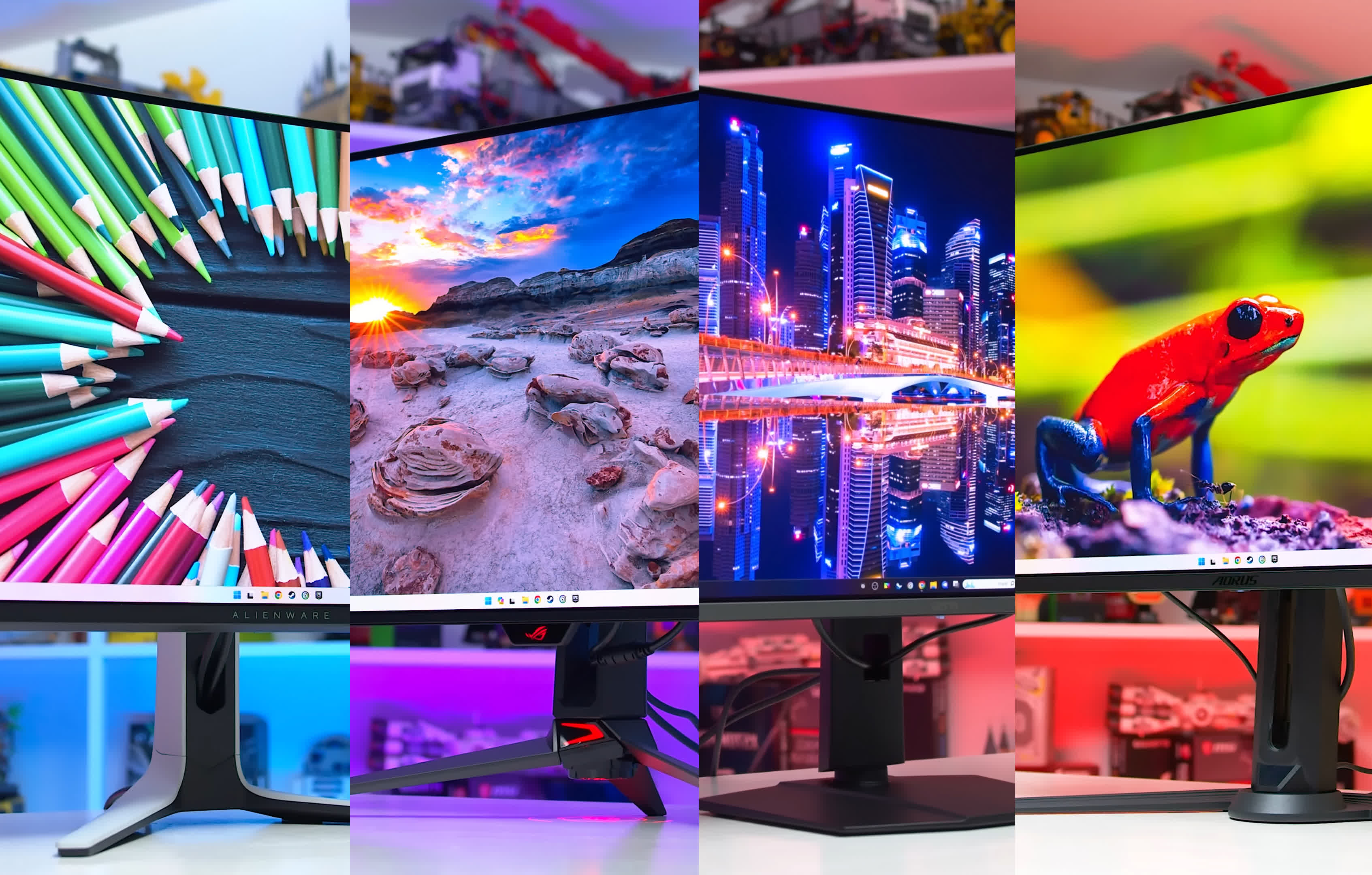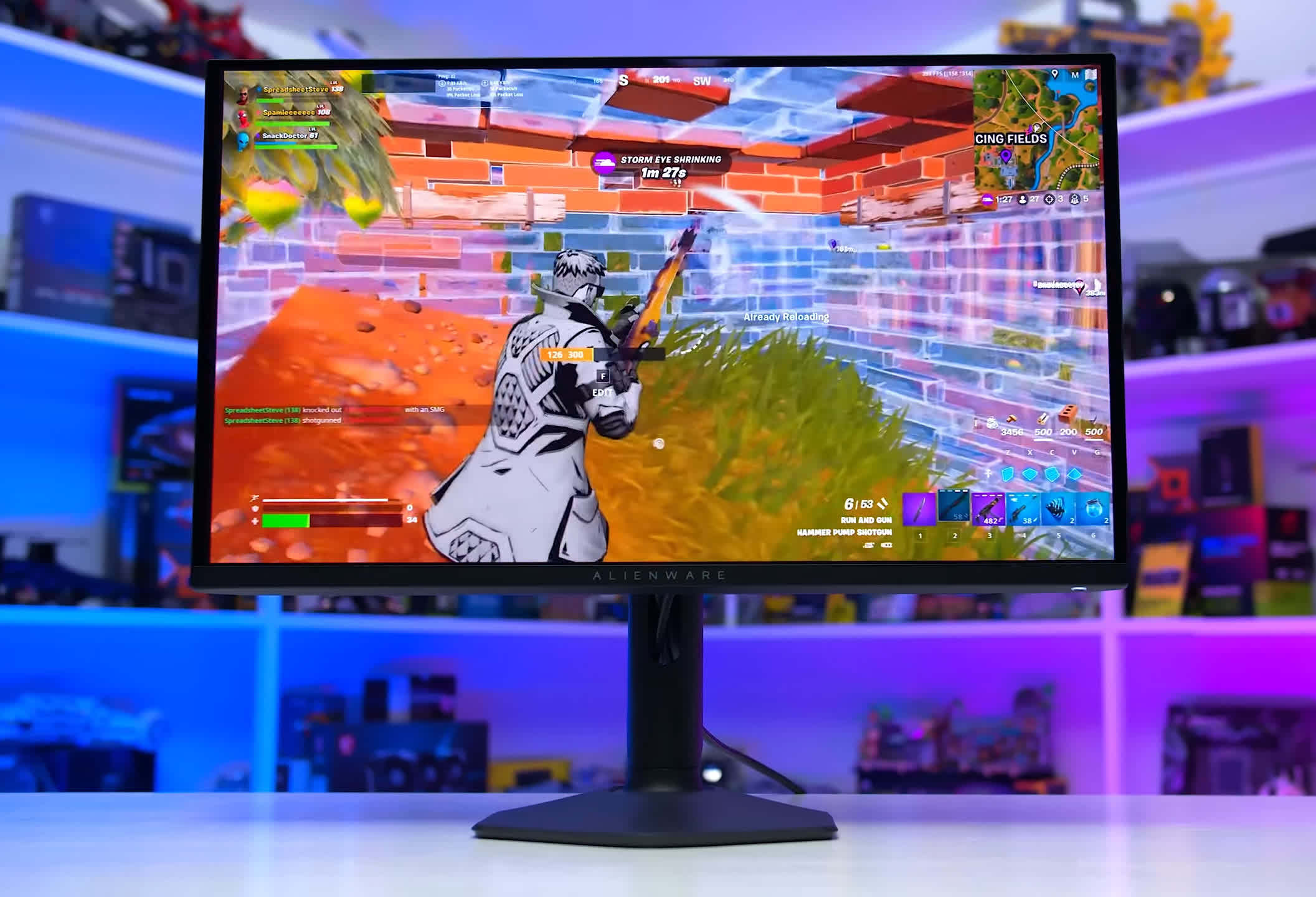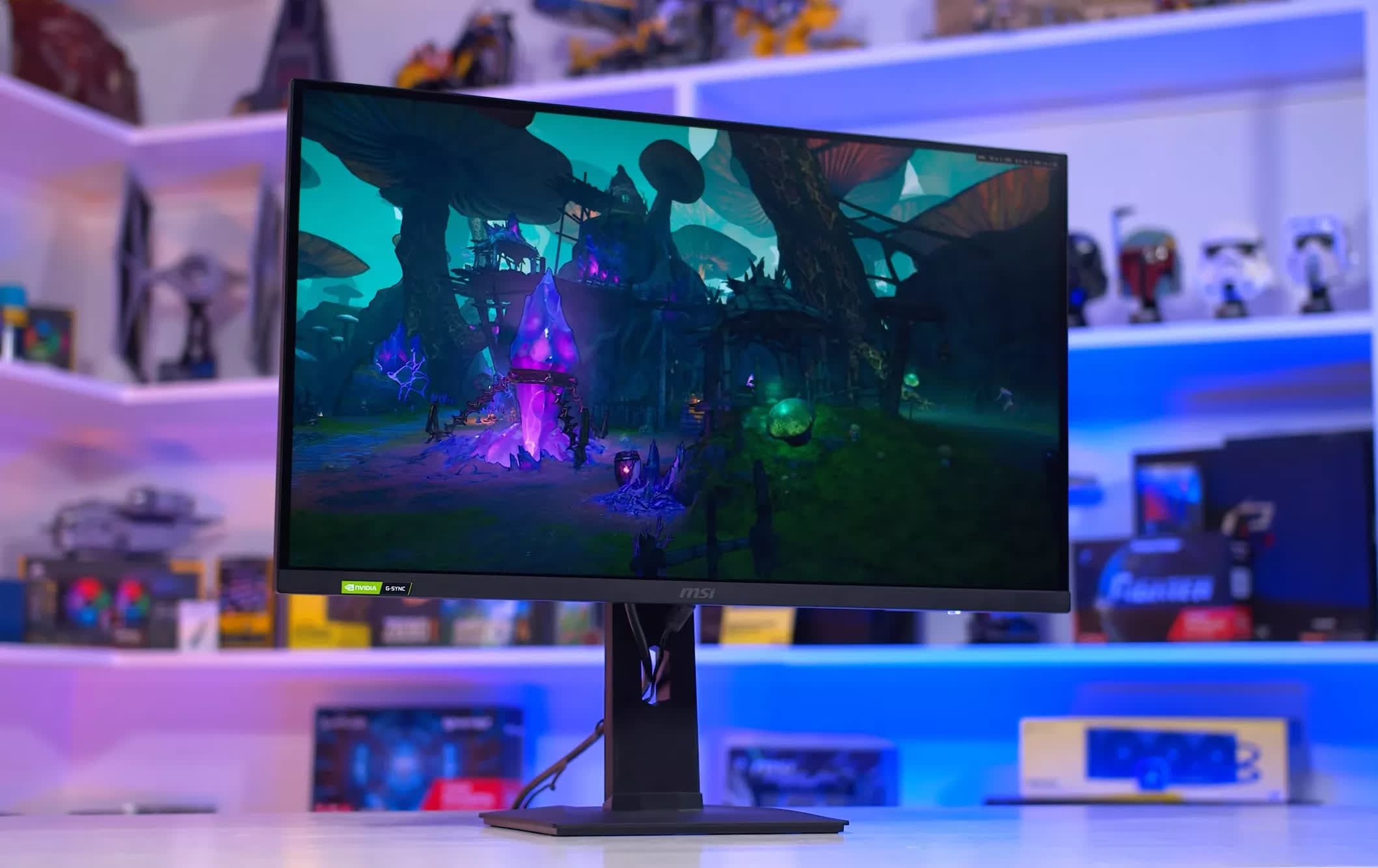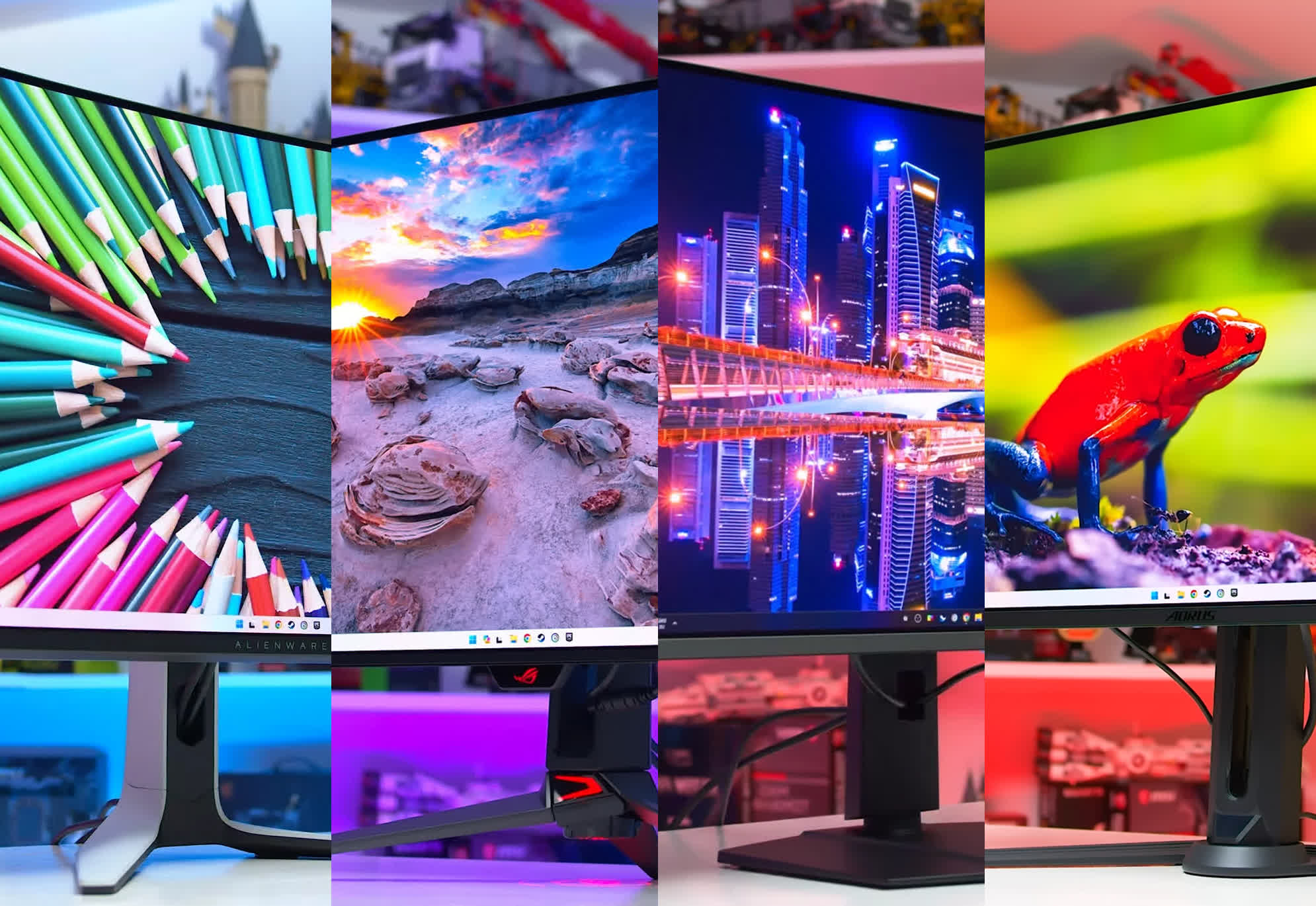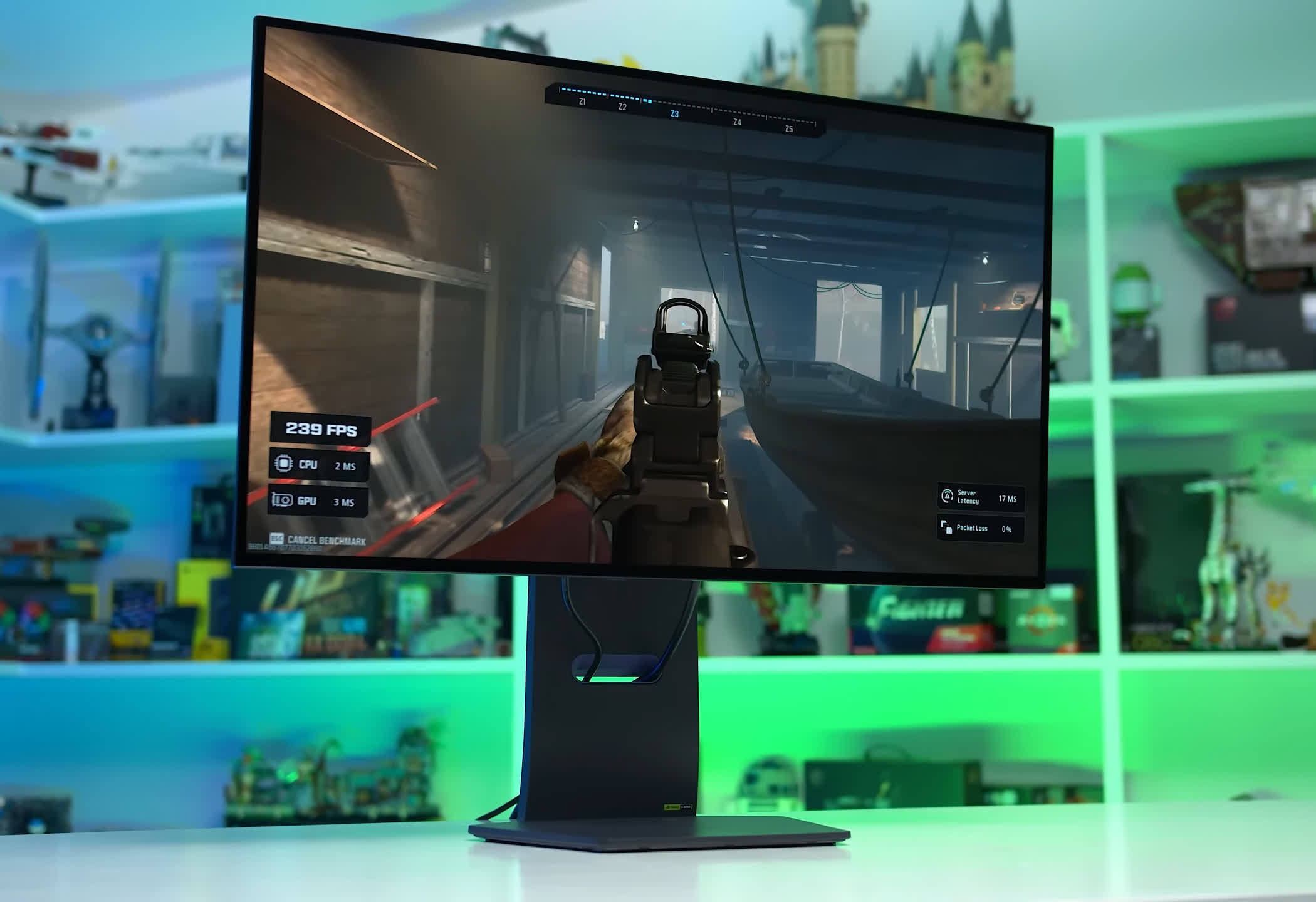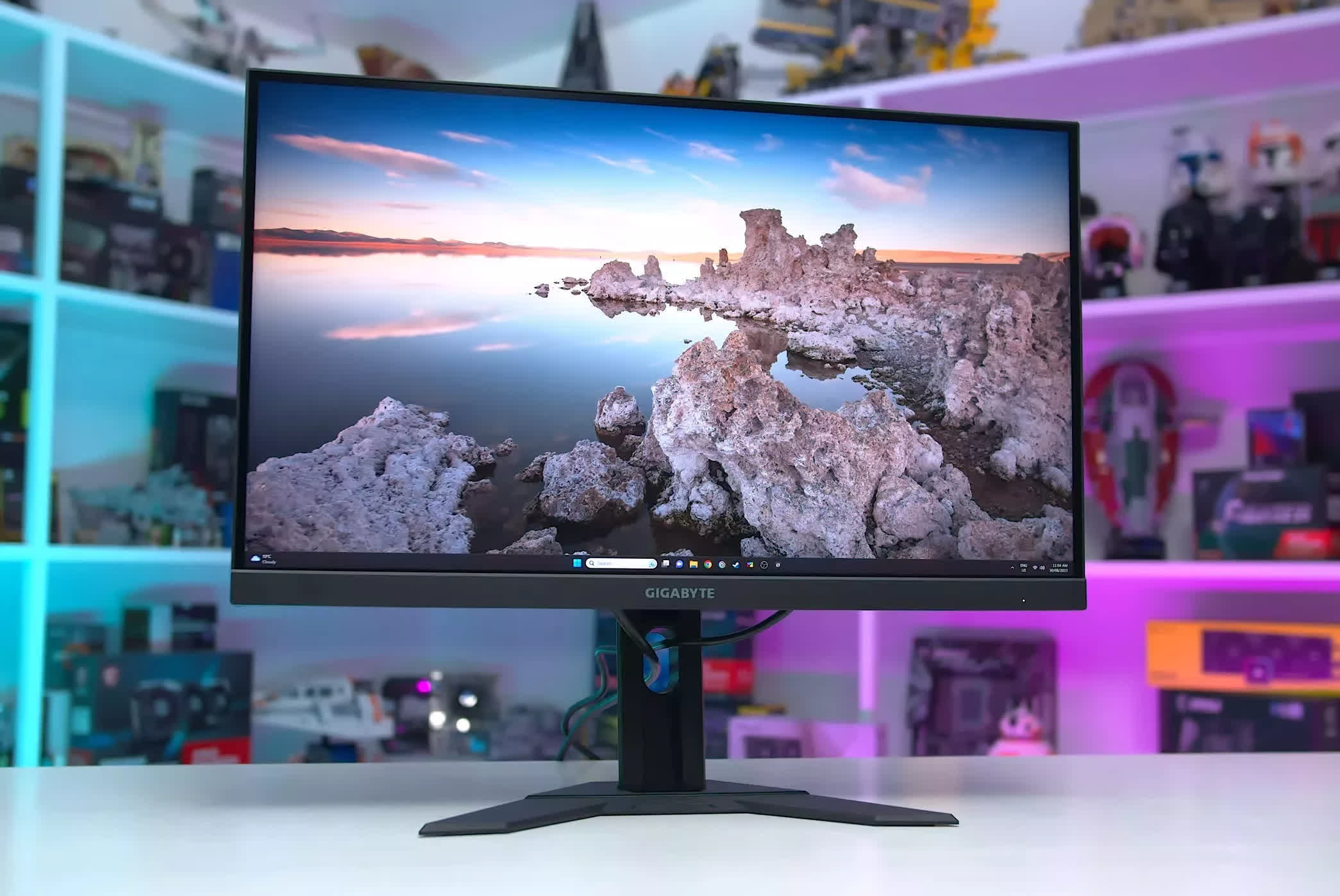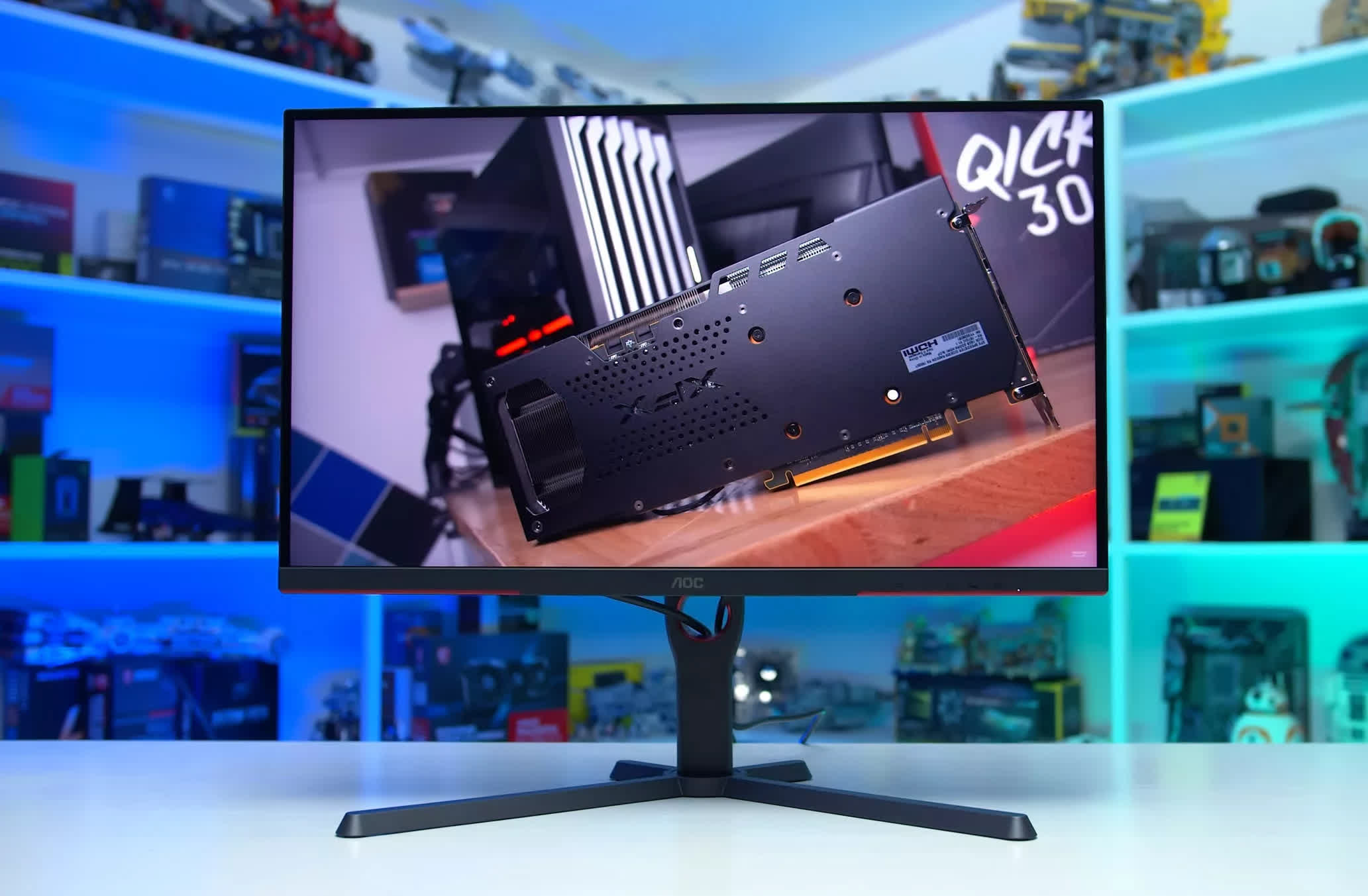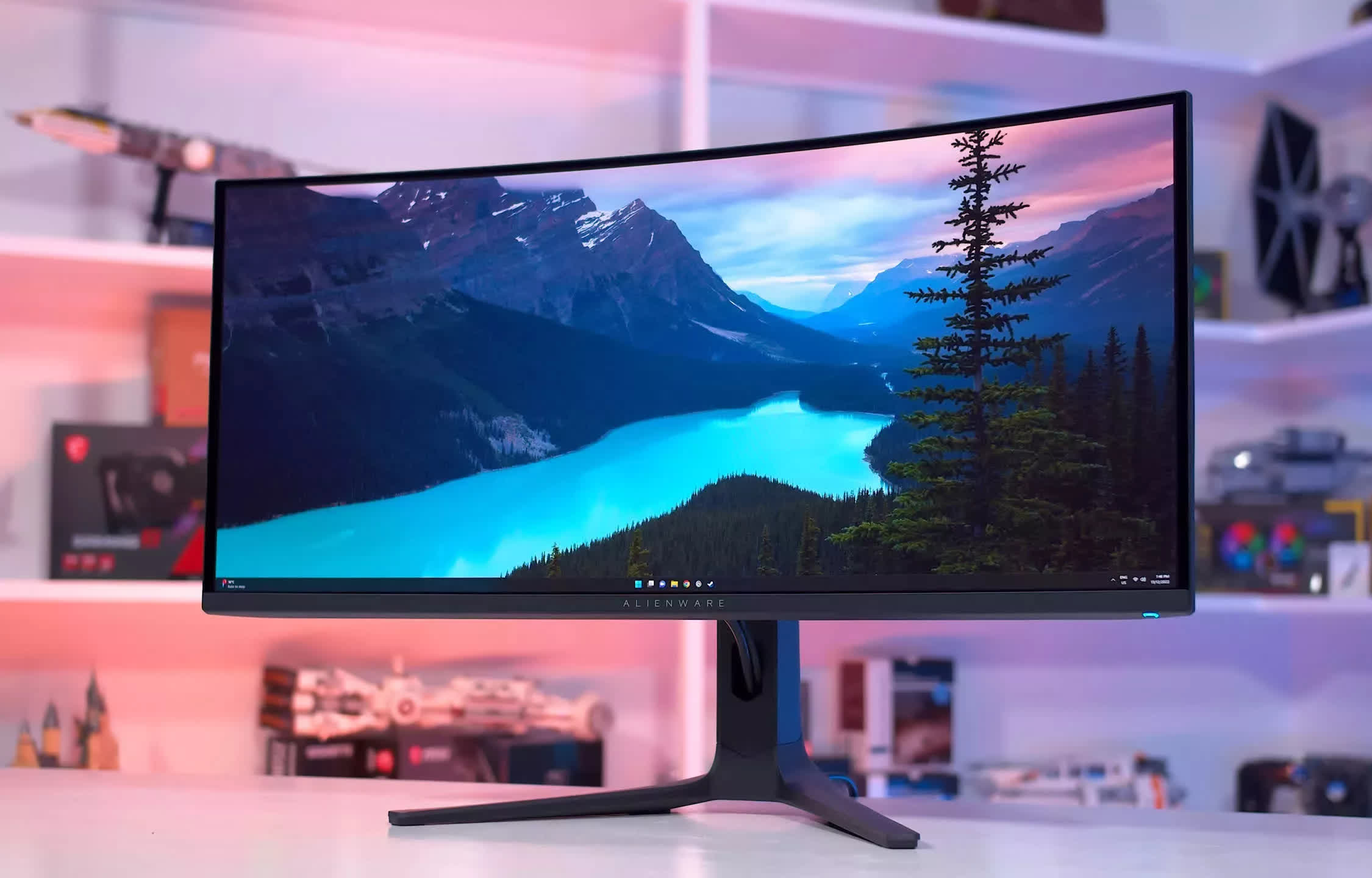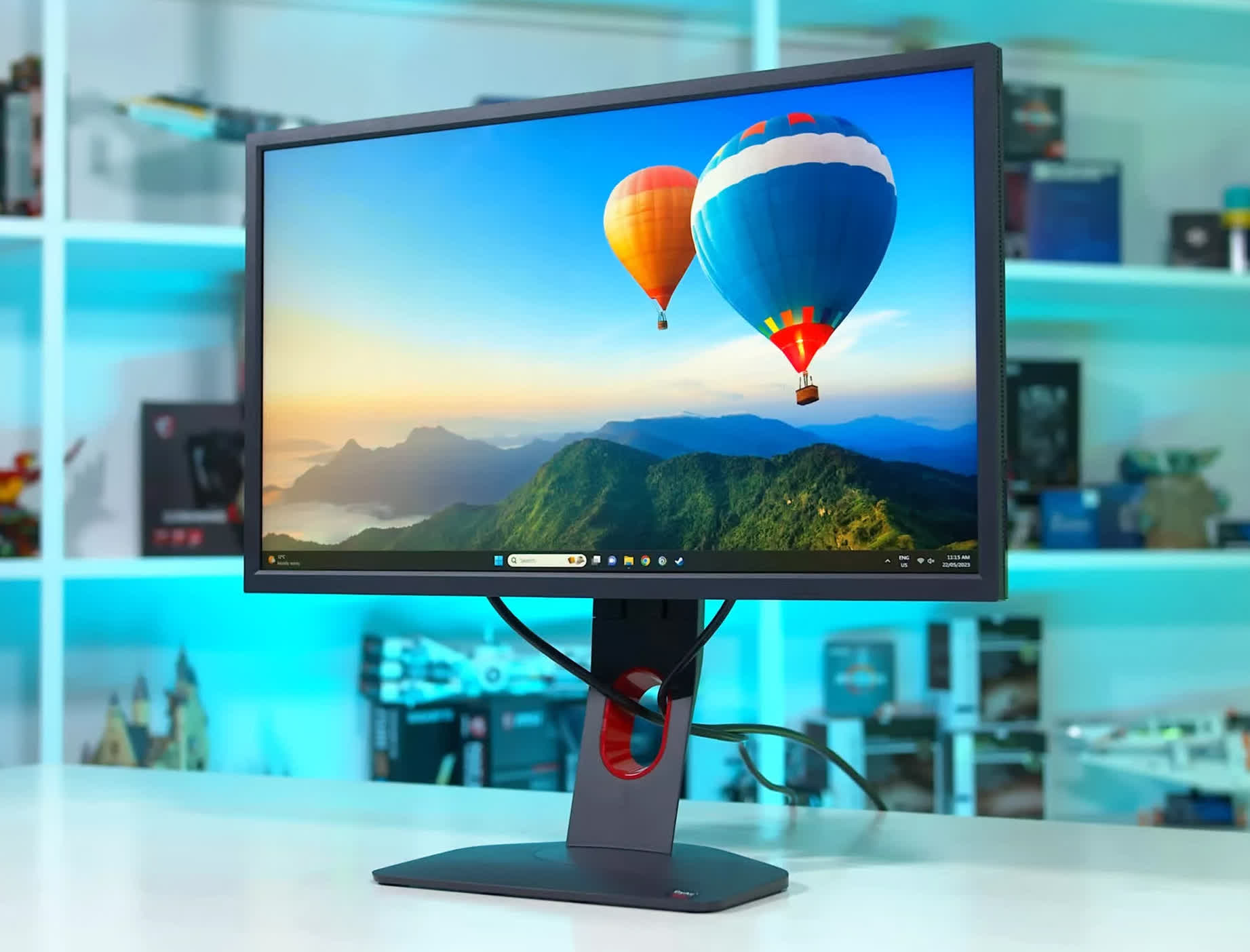Since the last update to our gaming monitor buying guide, we've tested many new and interesting products, mostly OLEDs, that are worth including. Additionally, some of our favorite monitors have dropped in price, necessitating adjustments to our picks.
To make this guide easier to navigate, we've divided our recommendations into sections covering 1080p, 1440p, 4K, ultrawide, and HDR gaming monitors. Each category offers various choices based on refresh rate, display size, and budget considerations.
Our usual disclaimer for Best Monitors buying guides is that we tend to discuss and recommend monitors we've personally tested and know to be good, or monitors that are very similar to the products we have tested since they use the same panels. It's always worth checking out the dedicated monitor reviews here on TechSpot or at Monitors Unboxed on YouTube. Most importantly, the recommendations below are the result of our testing and research from those reviews.
- 1440p - Best Overall
- 1440p - Best Budget
- 4K - Best Overall
- 4K - Best Budget
- Best HDR
- Best Ultrawide
- Best 1080p for Esports
- Best Budget 1080p
Best 1440p Overall
Asus XG27AQDMG | 360Hz QD-OLEDs

For most gamers, 1440p remains the sweet spot for price and performance in 2024. With new OLED options at the high end and price reductions for LCDs in the middle and lower parts of the range, there's something for everyone at this resolution.
For those seeking the ultimate 1440p gaming monitor, we currently recommend the Asus ROG Strix XG27AQDMG. This new glossy WOLED monitor offers a 27-inch panel size, 1440p resolution, and 240Hz refresh rate with adaptive sync. For most gamers looking for a high-end, brilliant gaming display, the XG27AQDMG provides an excellent range of features and performance without being overpriced.
There are a few reasons why we recommend this specific model. Firstly, as an OLED, it features individual pixel control and elite response times, making it particularly well-suited for HDR gaming. Its transition speed at 240Hz results in motion clarity roughly equivalent to 360Hz LCDs, and these benefits are evident at lower refresh rates as well, making it highly versatile for all sorts of gaming, whether single-player or multiplayer.
The HDR performance here is very good, leading to excellent image quality, particularly for single-player experiences. We get deep, zero-level blacks and tight control over highlights, producing clean HDR imagery free of zone artifacts. This particular WOLED also has decent brightness for both high and low APL content, in addition to a glossy coating that preserves good black levels and is free from coating grain.
The XG27AQDMG is also relatively affordable as far as OLEDs are concerned, priced at $700 to $750. Yes, that's still an expensive price tag overall, but this Asus model is better than its competitors, which start around $650 – particularly in terms of brightness.
We generally recommend the XG27AQDMG over 360Hz QD-OLED alternatives because we believe 240Hz is sufficient for most gamers, and the Asus model is around $100 cheaper than the cheapest QD-OLEDs. However, we wouldn't rule out QD-OLED options like the MSI MPG 271QRX or Dell Alienware AW2725DF, especially for competitive gamers where better motion clarity and lower input latency at 360Hz are beneficial. At the same refresh rate, there's little difference between WOLED and QD-OLED, though QD-OLEDs do have better text clarity, which could justify the more expensive offering.
That said, we generally only recommend OLED for content consumption, such as gaming or watching videos. There is a risk of permanent burn-in with OLEDs, exacerbated by static content like that seen when using productivity apps and web browsers. For mixed-use cases or situations where you primarily use your display for work, it's difficult to recommend an OLED right now.
Best 1440p Budget
AOC Q27G3XMN | LG 27GR83Q | MSI G274QPX

For budget 1440p gamers, there are a few ways to go. If you're interested in HDR gaming, mostly for single-player titles, we recommend the AOC Q27G3XMN. It's a 27-inch 1440p 180Hz VA LCD with 336-zone local dimming, and at just $280, it's one of the cheapest and best entry points to HDR gaming on the market right now. It outperforms most monitors advertised to support HDR, which typically only have inadequate, edge-lit dimming.
While not matching an OLED in terms of HDR performance, the AOC offers reasonable full-array dimming capable of producing deeper blacks and a higher-than-standard contrast ratio. Peak brightness is in the 1,300-nit range. However, for gamers seeking the best motion clarity, this VA LCD isn't the best in that area, so it's a trade-off between contrast capabilities and speed. We also had some concerns over backlight zone flickering. But generally, if you have just $300 to spend and want a true HDR gaming monitor, this AOC display is the way to go.
If HDR performance is less of a concern and you prefer a faster monitor with better motion clarity, we recommend an IPS LCD at the same price point. Specifically, the MSI G274QPF-QD is a good choice at $270, providing a 27-inch 1440p panel at 170Hz. It's 15 to 20 percent faster than the Q27G3XMN and does not suffer from visible dark smearing or backlight zone flicker. Additionally, you get better viewing angles and great color performance with a wide color gamut. What you are sacrificing is HDR, which this display doesn't support.
A step above these is the MSI G274QPX and LG 27GR83Q, both 27-inch 1440p 240Hz IPS LCDs. The MSI model is consistently around $350, while the LG fluctuates between $350 and $500. At $500, the LG model simply isn't worth it, so we'd go with the MSI model. However, if you can get the LG at its discounted $350 price, it's the better version and is what we recommend.
The main reason to spend the extra $80 is the higher refresh rate, which has its benefits in motion clarity and input lag for multiplayer titles. The 27GR93Q, in particular, is also better tuned across the refresh range and comes more accurate out of the box compared to either of the MSI monitors we've mentioned, so that's a healthy set of improvements as the price creeps more into the mid-range.
We advise avoiding any 1440p 240Hz LCD priced above $400 and any 1440p 180Hz-ish LCD priced above $300. There are many monitors in these categories, and many are overpriced, usually offering nothing to justify their higher price tags.
Best 4K Overall
4K QD-OLEDs: Asus | Dell | Gigabyte | MSI

The ultimate 4K gaming monitor right now is one of the many 4K QD-OLEDs that hit the market in the first half of 2024. OLED brings lightning-fast response times and individual pixel control, resulting in an excellent HDR gaming experience for gamers. When you step up to 4K, you get a higher resolution, better text clarity, and a larger panel size, making these displays some of the best on the market overall.
While there are two 4K OLED variants available, QD-OLED is the better choice for most people. The 32-inch 4K 240Hz QD-OLED panels we've tested produce higher real-world HDR brightness, better color volume, slightly better text quality, and lower prices. The glossy screen coating can have issues in brighter environments, but the clarity it provides is highly sought after, especially if you're not a fan of matte screens and their coating grain. Our recent 4K WOLED vs 4K QD-OLED feature goes into more detail on this.
We've tested four of the available 4K QD-OLED offerings – from Asus, Dell, Gigabyte and MSI – and overall performance is very similar between them, though each offers unique selling points. Generally speaking, if you're after fast response times, great motion and text clarity, a high refresh rate at 4K, excellent HDR, deep blacks, etc., you get that with all the models, so it's hard to go wrong. They all share the same QD-OLED panel which explains why the performance characteristics are so similar.
To help you decide on a specific model, here's what we recommend:
- The Asus ROG Swift PG32UCDM has the best feature set with an unlocked sRGB mode, ELMB black frame insertion, and promised Dolby Vision support, but is typically the most expensive.
- The Gigabyte Aorus FO32U2P is the only one with DisplayPort 2.1 UHBR20 connectivity, providing a way to access 4K 240Hz without DSC.
- The Dell Alienware AW3225QF is the cheapest variant in most regions, sometimes by a significant margin, which makes it a great choice if you don't mind the curved panel. It also supports Dolby Vision out of the box.
- The MSI MPG 321URX is the most affordable in the US and has the best set of user customizable OLED care features.
There are also several models we haven't tested that could offer better value. The Gigabyte FO32U2 is the same as the U2P model but without DisplayPort 2.1, and it's typically cheaper. There's also the MSI MAG 321UPX, similar to the 321URX but without USB ports. Originally, this model didn't support firmware updates, but now MSI tells us it does, though we haven't tested how it works yet.
While we think the 4K 240Hz QD-OLED offerings are generally the way to go for most buyers, especially those focused on single-player HDR gaming, 4K WOLED is still worth considering in some situations.
If you're a gamer who loves fast-paced competitive multiplayer titles, a 4K WOLED like the LG 32GS95UE might be the better choice. These 32-inch WOLED panels offer a unique "Dual Mode" feature that allows switching between 4K 240Hz and 1080p 480Hz modes at the press of a button.
The 1080p 480Hz mode has noticeably better motion clarity and lower input lag than 4K 240Hz modes, making it better for playing titles like Counter-Strike, Call of Duty, or Apex Legends – if you don't mind the drop in resolution.
Given that it also supports 4K 240Hz, you can switch back to a higher resolution experience for single-player or less motion-sensitive titles, giving you the best of both worlds – an awesome feature for those who enjoy a wide variety of games. However, the LG is more expensive than a typical QD-OLED, is less well-calibrated, doesn't get as bright in real-world scenes, and lacks other features.
Best 4K Budget
LG 27GR93U | Gigabyte M27U

If you don't want to go OLED or spend over $1,000, there are still great budget-oriented 4K monitors in the mid-range of today's market. A typical price to pay is between $450 and $500, and in that range, we recommend either the Gigabyte M27U or the LG 27GR93U. Both are 27-inch 4K IPS LCDs, with the Gigabyte model at 160Hz and the LG at 144Hz, which is a negligible difference.
Both options offer a balanced experience across all areas of performance, from response time speed to color quality. Motion performance is similar to that of other modern IPS LCDs, providing a wide gamut experience, great brightness, reasonable factory calibration, and, of course, the excellent resolution of a 4K panel suited to productivity work as well as gaming. Being an LCD instead of an OLED also means no concerns over burn-in, though the trade-off is the lack of HDR hardware capabilities.
The LG option is generally better due to features like hardware color calibration support and slightly better response time tuning, but it's typically a little more expensive than the Gigabyte.
There's not much difference between them, so the best option for you will come down to local pricing and specific features you might be interested in. Either option performs well and offers tons of versatility for work and play.
Best HDR Monitors
4K QD-OLEDs | Asus XG27AQDMG

If you've skipped to the best HDR section of this buying guide, we've already covered our HDR picks in the 1440p and 4K sections. Here's a quick summary if you're in the market specifically for an HDR gaming display:
The best HDR monitors on the market right now are 32-inch 4K 240Hz QD-OLEDs, but they're also the most expensive, typically starting around $1,000, which is certainly a hefty price tag. Luckily, you can't go wrong with any of the Asus PG32UCDM, MSI 321URX, Gigabyte FO32U2P, or Dell AW3225QF – they all perform exceptionally well. Your final choice should be based on any unique features that interest you and the price in your region.
For most HDR gamers, we can't recommend anything but OLED at the high end, as OLED capabilities are so well-suited to a wide variety of games. There are a few HDR LCDs we've liked in the past, such as the Samsung Odyssey Neo G7, but with current prices, it's difficult to recommend them. The only reason to choose an LCD is if you plan on doing a lot of productivity work, in which case burn-in concerns around OLED make that panel type less than ideal.
If you want an OLED gaming monitor for its HDR capabilities but can't justify spending over $1,000, then the next best option is spending around $700 to get the Asus ROG Strix XG27AQDMG. It's a 27-inch 1440p 240Hz WOLED with a glossy screen coating and generally excellent performance, including great brightness characteristics. With its price sitting around the entry point for OLED monitors, it's hard to beat in the upper mid-range.
For budget HDR gamers, we recommend the AOC Q27G3XMN. It features a 27-inch 1440p 180Hz VA LCD panel with 336-zone local dimming. It doesn't have the same tight control over HDR as an OLED, but its contrast is enhanced by a truly HDR-capable backlight, and it gets very bright.
There are few monitors offering these sorts of capabilities at its $280 price point; most are fake HDR products that are impossible to recommend for those who want to experience proper HDR gaming. This AOC monitor isn't fake, and we recommend it.
Best Ultrawide
Alienware AW3423DWF 34" QD-OLED
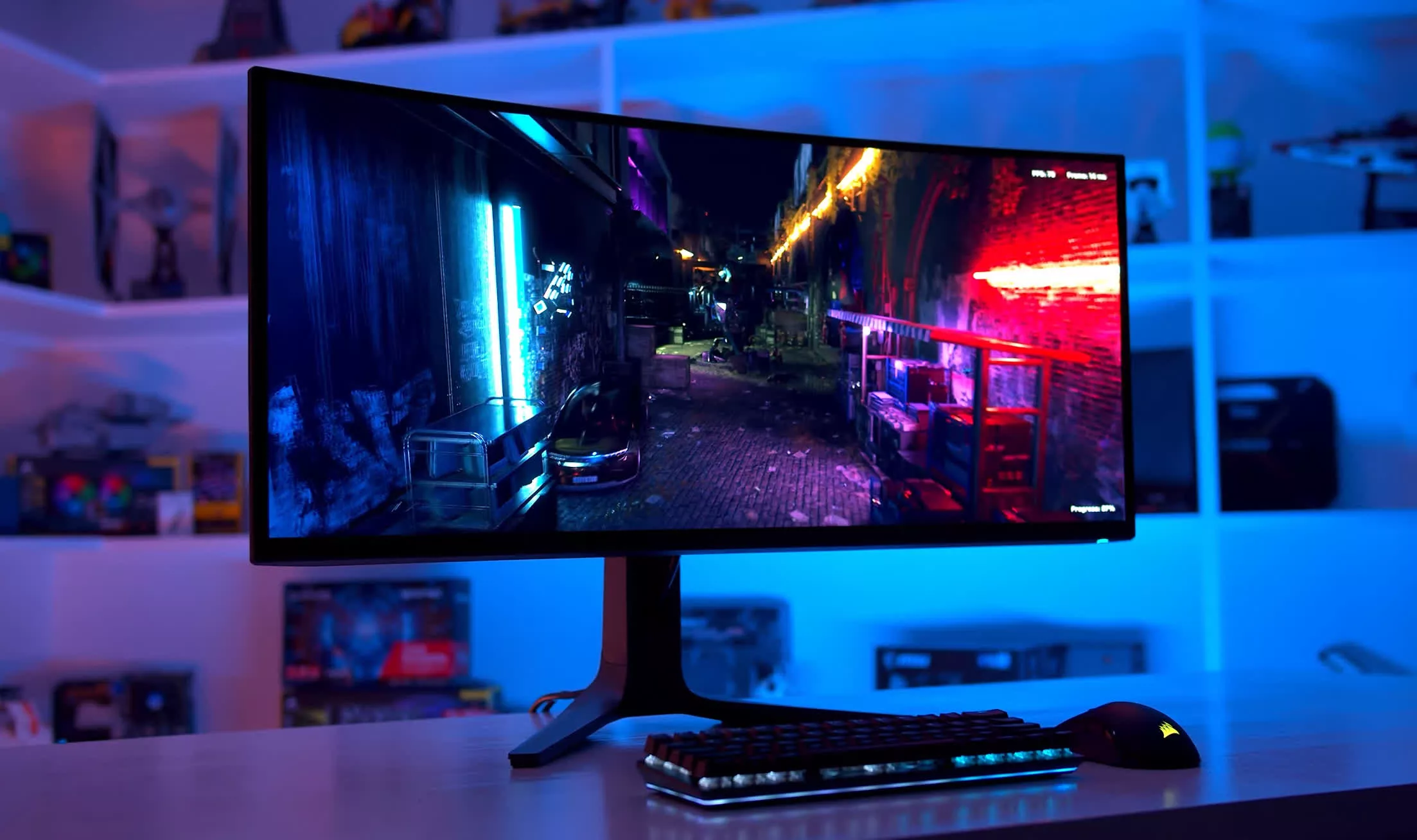
While we have tested more ultrawide gaming monitors in recent months, in our opinion the best option has not changed: get the Dell Alienware AW3423DWF. At just $800-900, the AW3423DWF is rarely beaten for value, and thanks to the latest suite of firmware updates, it also offers excellent performance.
This Alienware is a 34-inch 3440x1440 165Hz QD-OLED, bringing benefits like elite response times and per-pixel control. This panel can hit up to 1,000 nits of brightness for small elements and excels at displaying HDR content, making it highly suited to single-player gaming, especially with the immersive ultrawide format. It's not the fastest OLED available now that we have 360Hz and even 480Hz options, but the speed of OLED allows it to punch above its weight relative to an LCD operating at the same refresh rate.
The DWF model is well-calibrated, has decent SDR brightness, and Dell helps mitigate anxiety over burn-in with a three-year warranty. The subpixel layout of this QD-OLED panel isn't ideal for text quality, and like all OLEDs, there is a risk of permanent burn-in. The glossy screen coating is divisive, offering benefits in low ambient light environments but struggling in brighter conditions.
Compared to other similar QD-OLED ultrawides, it's hard to beat the AW3423DWF in value. There are newer 240Hz panels that we are about to test; however, their expected pricing is higher than this Alienware, so we'll see where things land in the next few months. For now, Dell has done a fantastic job of keeping this display performing well and competitively priced.
We've also seen the release of WOLED ultrawides lately, such as the Asus ROG Swift PG34WCDM. While these monitors have some advantages like a higher 240Hz refresh rate, there are other areas where they aren't as strong. In general, we still prefer a QD-OLED alternative. The main reason we can't recommend them is their ludicrously high $1,300 MSRP, which makes them impossible to recommend when compared to the $800 AW3423DWF. So, again, just go with the Alienware.
Best 1080p for Esports
Asus ROG Swift Pro PG248QP | BenQ XL2566K

If you're after a premium esports gaming monitor, there are two options on the market best suited for that task, but be prepared to pay a hefty price. They are the Asus ROG Swift Pro PG248QP, priced at a whopping $880, and the comparatively more affordable BenQ XL2566K at $600.
Both are 24-inch 1080p TN LCD monitors, with the Asus option going up to 540Hz and the BenQ up to 360Hz, both offering elite-tier backlight strobing support.
The main benefit of the Asus PG248QP is the higher refresh rate for better motion clarity and input lag, as well as its elite ULMB2 backlight strobing technology. It's the clearest, fastest LCD we've tested so far, though its high price tag is very off-putting. The BenQ XL2566K isn't quite as fast, but it's cheaper, and its DyAc+ backlight strobing tech also performs very well.
As both the Asus and BenQ options use TN panels, they are designed exclusively for high-performance gaming and not visual quality. They have atrocious viewing angles and are nothing special when it comes to other aspects of image quality, like contrast ratio or color gamut.
The Asus PG248QP is the better calibrated monitor and even offers a bit of wide gamut, but the primary use case here is competitive gaming and seeing your enemies with the greatest possible clarity.
Best Budget 1080p Monitor
AOC 24G4 24"

Not a whole lot has changed in the 1080p product class over the last few years. The reason you'd consider a 1080p monitor in 2024 is that you're either after one of the cheapest displays you can get, or you want a super high refresh rate option for serious competitive gaming. For anything between these two categories, there are better options, particularly 1440p monitors which offer great value for money.
In the budget category, we recommend the AOC 24G4, also known as the 24G4X in some regions. This is a newer, better version of the 1080p AOC monitors we've been recommending previously, such as the 24G2SP and 24G2. It also outperforms similar budget monitors like the Gigabyte G24F2, and at around $150, there aren't any better or more reliable choices.
The 24G4 is a 24-inch 1080p 180Hz IPS LCD monitor that features improved response time tuning and a higher refresh rate relative to its predecessor. It's not an outstandingly fast display, but it offers a good contrast ratio, wide color gamut, great factory calibration, and low input lag. This creates a nice overall package that delivers a strong balance of motion performance and color quality. It's common in this price range for one of those aspects to be neglected, but that isn't the case with the 24G4, making it a solid entry-level monitor choice.
